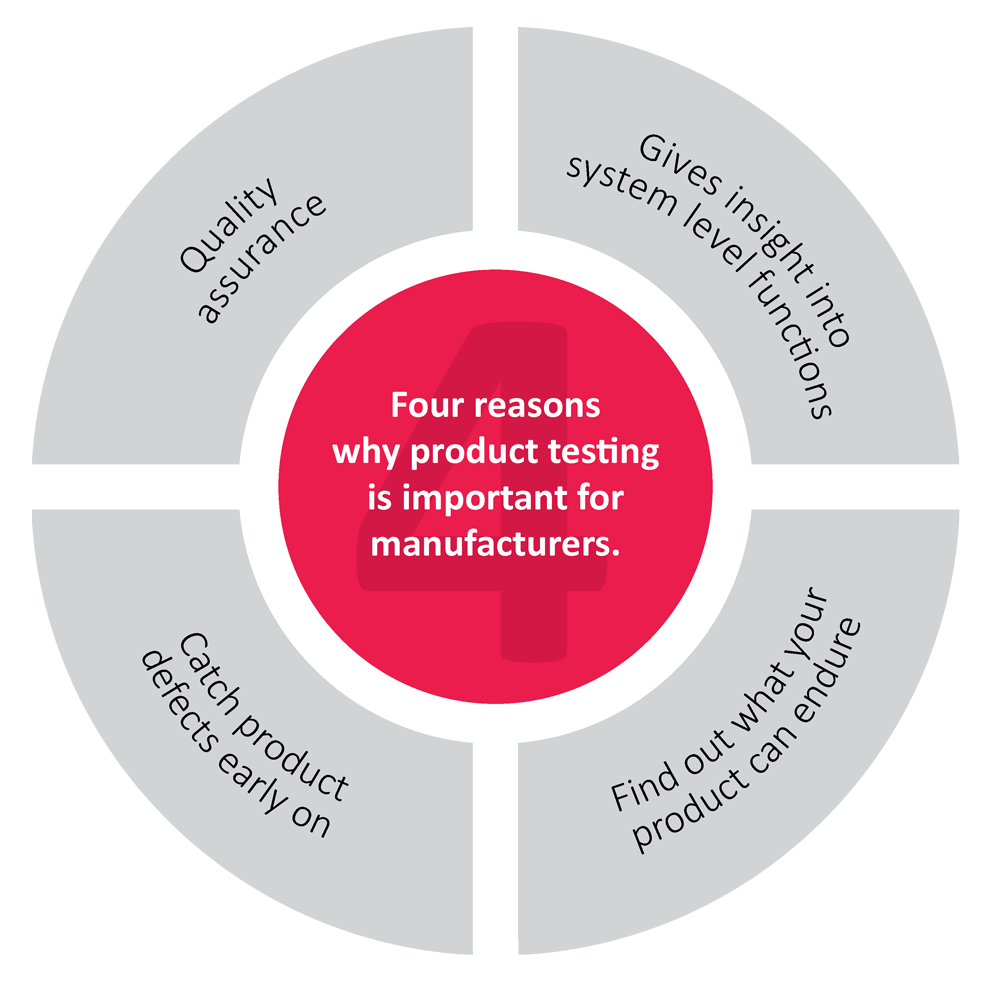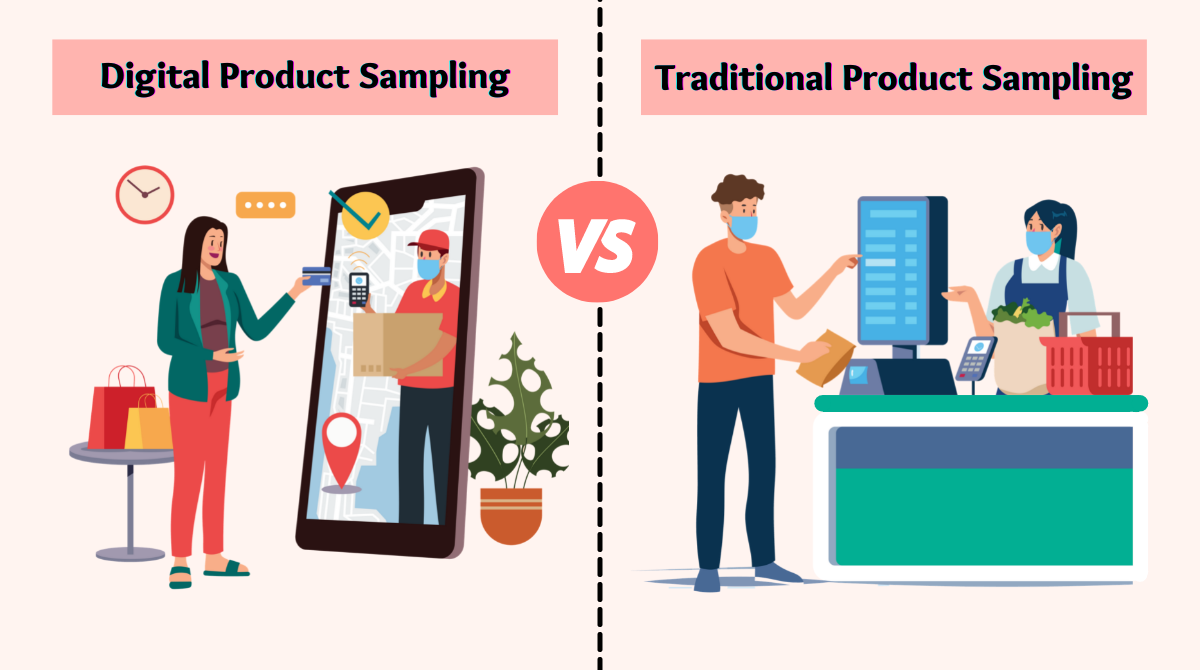In-home product testing or In-home usage tests (also known as IHUTs) is nothing new in the field of product research, but it is entering a new phase with the development of complex algorithms, quick turnarounds, and limitless testing options.
IHUTs, or in-home usage testing, is a well-liked method of market research at various phases of product development. In this article, we will offer a comprehensive guide to IHUT product testing.
What is In-home Product Testing (IHUT) and how it works?
In-home usage testing or IHUT for short is a cost-effective technique for manufacturers that enables them to test their products with actual customers before mass production and launch.
In this method, participants can readily order a selection of items to use at home. Afterward, a follow-up telephone or online survey, or if necessary, even an in-person interview is performed to collect their feedback.
This methodology is particularly interesting for the respondents since they get to touch and use the product in real life while providing the client with in-depth input on what customers will think after the product reaches the shelves.
IHUTS market research yields more realistic findings on product satisfaction, usage, and potential improvement areas, allowing customers to test your product in their homes rather than in a controlled testing setting.
The in-home usage span varies from one-time to multiple usage over the long term depending on the product type and your particular demands. Your items will be sent to the participants after respondent selection. Participants are invited to complete an online survey at various points throughout the usage period.
Why is the IHUT method important?
The IHUT method is crucial as it measures these elements:
- The first impression
- Appeal
- Purchase intent
Participants can respond to the essential questions of an acceptor-rejector methodology before and after sampling the product to determine whether it lives up to consumer expectations.
Additionally, it evaluates the degree of acceptance both before and after use. In the event that acceptance falls, you can examine the findings to ascertain the reason why.
It is possible to measure customer happiness in order to gain preliminary knowledge of prospective areas for improvement as well as satisfaction with specific product characteristics.
Additionally, the relative importance of the various factors can be determined to ensure that your time and resources are allocated to improving the areas that are most important to customers.
The results of the various tasks are all combined and analyzed over time. You can get results and recommendations from IHUTS that are precise and relevant. You will be completely aware of your product's readiness for a full market launch, its potential for acceptance, the modifications that still need to be made, and the best way to advertise it.
Key Takeaways:
- IHUTS's real consumer-usage testing gives you the opportunity to conduct the last and most crucial inspection of your product before launch.Â
- It provides a quick and affordable way to determine whether your product is ready for market.
- More realistic results than from a controlled testing environment due to its real-world setup.
- A clear understanding of the acceptor-rejector methodology's level of acceptance before and after product use.

Where to use In-Home Product Testing
The most obvious reason is to get actual consumer input prior to a product launch. A prototype, a more finished product, or a new version of an existing product can all be used in this technique.
To determine the degree to which expectations are satisfied, surveys or interviews about product usage can be conducted before and/or after the in-home test. Users' opinions and insights might influence the messaging and promotion for the launch.
Related Article: 4 Ways Using a Product Sampling Service Will Increase Sales
Moreover, it is possible to follow a consumer's degree of satisfaction over time if a product is used every day and determine the reasons why there can be a difference in this assessment.
It is also feasible to find out more information on the product's general appeal, the demand for feature improvements, purchase intent, and pricing elasticity.
Lastly, aside from the expense of sending goods to a consumer's home, IHUT market research is more economical than having people visit a less realistic setting, like a test facility.
What are the advantages and disadvantages of IHUT?
Advantages of IHUT Product Testing
Regardless of the industry, any business can benefit from market research through in-home product testing. A product must pass a number of tests before being put on the market for customer purchasing. Even though IHUT market research is not required for product launches, it is strongly advised.
- Real-time Feedback
IHUTS offers a significant advantage in that it can collect real-time data. There is no disconnect between product usage and opinion because this kind of market research takes place in a participant's home (rather than a focus group room or another testing facility).
As soon as participants use the product, they can respond to questions and provide more details via an online survey. As a result, the data gathered is more trustworthy.
- You have multiple options
There are many ways to obtain data via IHUT research, these options include, among others: telephone polls, online polls, Video chatting, and Personal meetings.
Depending on the brand and the product, there may be a delay between when a product is used and when feedback is gathered. Interviews could take place as soon as one week after the IHUT or up to six weeks afterward. The complexity of the product in question is usually the cause of time spent "in-between."
- You can test your prototypes
IHUTs have the distinct advantage of allowing participants to interact directly with your product in settings that are naturally occurring. Participants in this kind of market research might give companies the following information:
- Is the product tasty and odorous?
- Are the directions simple to follow?
- Does the product deliver on what it promises?
- Is the package attractive to the eye?
- Where do they use the product the most in their homes?
IHUT research yields suggestions basd on user feedback.
You can make necessary adjustments to your product before it hits the market by getting early responses to important questions like these. The feedback helps with data-driven decision-making, which will ultimately help you avoid wasting time, money, or stress!
- You can get to know your market before the launch
IHUT enables respondents to describe sensory aspects of products, such as their appearance, feel, smell, and flavor.
IHUTs provide you with information on the entire picture, not just a little portion of it. Before it is offered for sale to the general public, your entire product will have undergone a rigorous assessment.
- First impressions
- Interest and appeal
- Satisfaction
- Product Enhancement
- Estimated price
- Purchase Intent
- Rivalry
If you choose to proceed with a full-on product launch, these insights will help you determine whether or not your target market will be eager to purchase the product.
You will now have a chance to assess and improve your product in light of the feedback. You may be confident in the features that customers liked, and you'll have had time to eliminate the drawbacks.
- Monitor Your Product's Development
The advantages of IHUTs extend throughout the whole lifecycle of a new product, not just the early stages of its development. They enable you to monitor the development of your product from pre- to post-launch.
For instance, some businesses might want to carry out multiple studies on their product. This is quite logical given that consumer attitudes can change as the product ages. It can be useful to compare statistics between when the product was a prototype and when it has been on the market for a while.
- Easier to recruit participants
IHUTs are wonderful for a number of reasons, including the fact that location is irrelevant. For instance, the number of in-person focus groups is constrained since attendees must be close to the research site. There is no geographic constraint because everything is done at home.
People are frequently delighted and eager to try something new, they view it as a special occasion. The fact that participants can frequently keep the product being tested is an additional perk. They frequently receive bonuses like gift vouchers in addition to being allowed to keep a brand-new item for nothing.
Disadvantages of the IHUT market research
As you can see, IHUT tests have several advantages, making it challenging to identify all of their drawbacks. Let's take a look at some of the disadvantages of IHUT product testing.
- Results with statistical generalizability
It would be smart to think about combining your IHUT project with a significant quantitative study if one of your primary research goals is to provide data that are statistically sound and generalizable to a particular bigger population.
IHUT research projects are frequently conducted on small, perhaps only 100 or 200, very targeted populations, therefore the findings are not always easily expandable to a wide range of other demographic groups with a limited margin of error. You can get the best of both worlds by combining an IHUT project with a large-scale survey that is well-designed.
- Product is pricey
Some products are simply too costly to give away for free or to expect consumers to test them before returning them. For instance, expensive gadgets will simply not function with IHUT unless you have been given an astonishingly large budget. In these circumstances, central location tests—in which participants join the researcher at a preset site—are the ideal remedy.
Related Article: Maximize the Success of Your Product Sampling Campaign
- Product is confidential
Some products are so secretive that even looking at pictures online, where pictures can be screen-captured or taken with a phone, is a challenge.
Central location tests are once more the ideal solution to the IHUT if the risk of disclosing confidential information to rivals or the general public is too high.
- Precision control is required
An IHUT research might not be the best choice if you're evaluating a product with a steep learning curve and extremely specific processes and methods for proper operation.
Tests conducted in a central place are ideal once more. In these situations, the researcher may direct participants through the test because they have been extensively educated to use the product and show it objectively.
Of course, an IHUT might just be the ideal option after all if you want to learn about the various ways that people misuse and abuse a product while they learn how to use it so that you can compensate for those flaws and build remedies.
Case Study: IHUT campaign for a new low-alcohol beer
The Challenge
Sales of low and no-alcohol beverages have increased by more than 20.5 percent in recent years, illustrating how quickly this trend has taken off. However, the expansion of this market presented a problem for the beer sector. Although the company was able to design the product for the market, they anticipated a lengthy and expensive process to determine how consumers would respond to it.
The Goals
The objectives were to
- Ask customers about their experience using the low-alcohol product.
- Recognize the elements that consumers wanted in a low-alcohol offering.
- Recognize the driving forces and influences behind low-alcohol purchase decisions.
- Instantly elicit responses from those who have seen the new packaging and branding.
The Solution
They came to the conclusion that IHUT research would provide them with the objective, real-world input the brand required. They selected 135 participants and sent a beer sample to each. After giving their opinions on beers in general and completing a video task of the product test, the respondent was able to give media-rich, on-the-spot replies.
They also considerably cut expenses by eliminating the necessity for a central site, moderated, and overcame the inherent challenges that had hampered earlier non/low-alcohol quantitative research. A task list with all the tasks at once allowed respondents to try the goods over the course of a few weeks and record their real-time, in-the-moment experiences with them. This gave exceptionally media-rich insights into real-life low-alcohol beverage occasions and put the product in a setting where it would typically be consumed.
Giving the products to consumers and letting them record their unboxing experience from the point of delivery allowed them to gain quick feedback from the respondents on the beer's branding and packaging.
Final Words
The ultimate benefit of in-home product testing is a competitive advantage. The best method to control a market or an industry is to build and maintain a superior product. Companies can attain and maintain product superiority if they are committed to regular in-home usage testing. On the other hand, businesses that disregard the advice and learn from iHUTs risk finding themselves on the verge of extinction due to a rival who has "crafted a better mousetrap."



